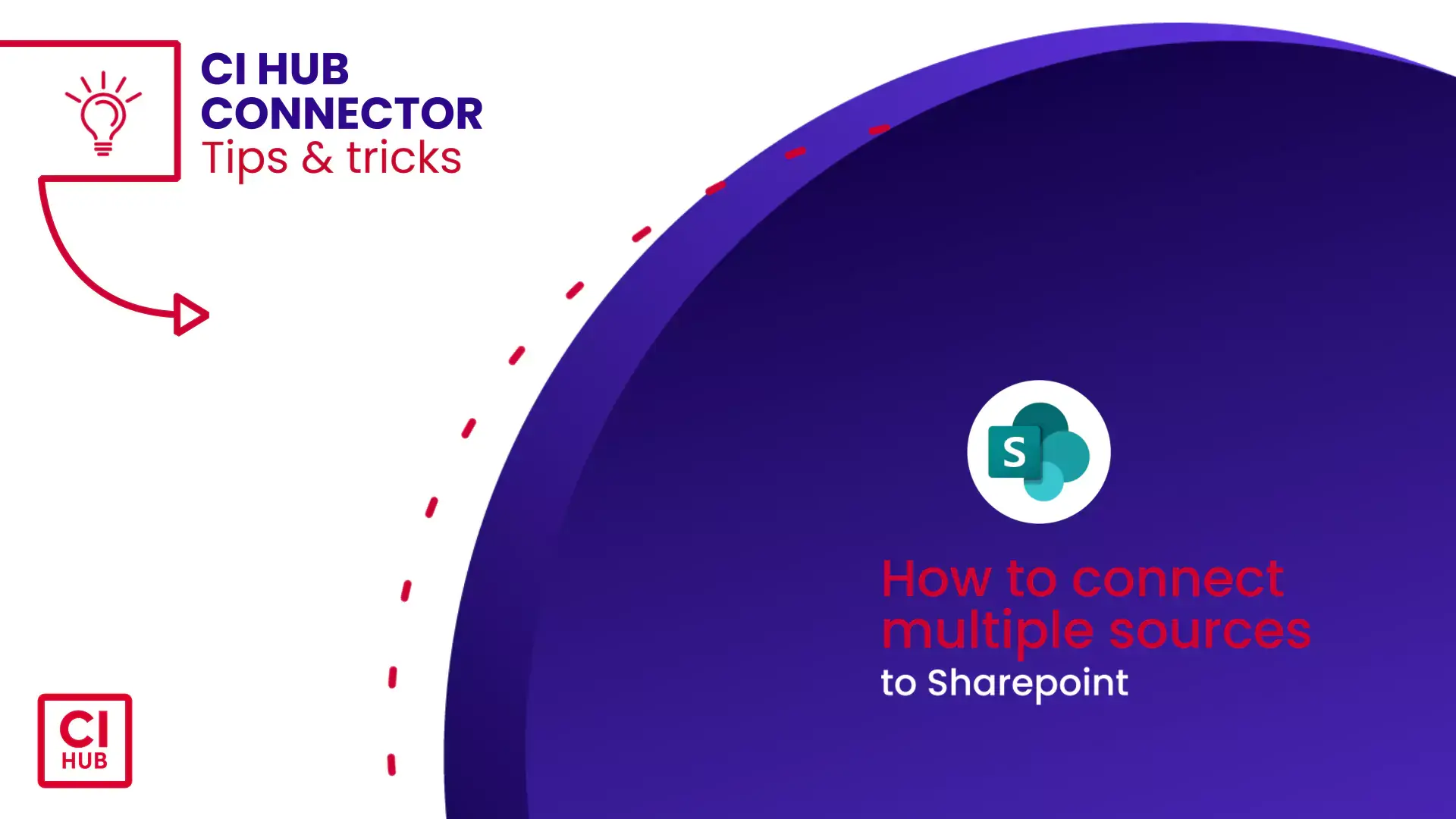
April 26, 2022
How to Connect Multiple Sources to SharePoint
SharePoint is the beating heart of companies around the world - one of the best and most reliable web-based collaborative platforms on the market. But often, companies have assets and content stored in different sources - from DAMs to drives, stock providers and more. Accessing this content through Sharepoint can be tricky and time consuming. But it doesn’t have to be this way.
With the CI HUB Connector, its easy to access your content, wherever its stored directly on your SharePoint. In this video, we will show you how to get started with the CI HUB add-in for Sharepoint and explain how to use it best for your work.
Access Content from Multiple Sources Without Leaving Sharepoint
For more efficient email workflow within Outlook, integrate the CI HUB add-in and experience the power of seamless drag-and-drop file attachments. Simply follow these steps.
Follow these steps to get started with CI HUB on your Sharepoint:
Step 1: Install and launch the CI HUB Add-in
Follow the steps below to install the CI HUB add-in to your device.
-
Open the Microsoft AppSource.
-
Search for “CI HUB.”
-
When you find the CI HUB add-in, choose “Add.”
-
The instructions will guide you to installation.
-
Launch CI HUB in Sharepoint.
-
You will then need to authenticate the add-in with your CI HUB account.
-
Add your login details to enable CI HUB to work within your connected systems.
Step 2: Connect Source System to SharePoint
-
In the CI HUB Add-in, you can now start the process of connecting your first source system to SharePoint.
-
This can be one of dozens of different drives and DAMs, from OneDrive to Box and dozens more.
Step 3: Get Direct Access to Your Content
-
When your source system is connected, you now have direct access to all the content within it inside SharePoint.
-
You can now browse through folders and content.
-
Within CI HUB, it’s easy to identify the content you need using the thumbnails for each asset.
Step 4: Manage Profiles for Multiple Source Systems
-
If you want to add multiple source systems, they can be added using the profiles option.
-
Choose ‘Load Profiles’ to access the other sources systems you have available.
-
Within the profiles, you can include cloud storage systems like OneDrive and Box, digital rights management systems such as Fidel, stock providers such as Getty Images, and DAM systems such as BrandFolder and Celum.
Step 5: Switch Seamlessly Between Systems
-
Once you have created the profiles all of your source systems should be accessible within SharePoint.
-
You can then easily switch between systems with a single click to access the content you need.
-
To get a better look at the content, double-click on a thumbnail to access the detail view.
-
In this view, you can view the previous versions and also access metadata content.
Conclusion
By following these steps, you can efficiently connect and manage various source systems within SharePoint using the CI HUB Add-in. It’s easy to get started, and will save hours of time normally lost hopping between windows trying to find the content that you need. Now, its all at your fingertips, without you ever having to leave Sharepoint! The CI HUB connector for SharePoint works with over 50 leading systems, including DAM, PIM, MAM, cloud storage, and many more systems.

Article by
Gerd Glaser
CXO, Chief Experience Officer